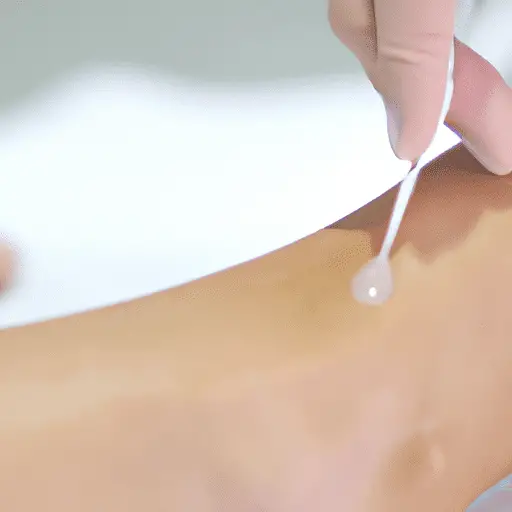Treating Spider Veins with Sclerotherapy
-
Table of Contents
- Treating Spider Veins with Sclerotherapy: An In-depth Analysis
- Key Takeaways
- Introduction: Understanding Spider Veins and Sclerotherapy
- The Sclerotherapy Procedure
- Effectiveness of Sclerotherapy
- Potential Side Effects and Risks
- FAQ Section: Sclerotherapy for Spider Veins
- 1. Is sclerotherapy painful?
- 2. How long does the procedure take?
- 3. How soon will I see results?
- 4. Are there any restrictions after the procedure?
- 5. Will my insurance cover sclerotherapy?
- Conclusion: The Efficacy of Sclerotherapy for Spider Veins
- Key Takeaways Revisited
Treating Spider Veins with Sclerotherapy: An In-depth Analysis

[youtubomatic_search]
Key Takeaways
- Sclerotherapy is a minimally invasive procedure used to treat spider veins and small varicose veins.
- The procedure involves injecting a solution directly into the vein, causing it to collapse and eventually fade away.
- Sclerotherapy is considered safe and effective, with a success rate of 60 to 80 percent for each treated vein.
- Side effects are generally mild and temporary, including bruising, swelling, and skin discoloration.
- While sclerotherapy can significantly improve the appearance of spider veins, it does not prevent new ones from forming.
Introduction: Understanding Spider Veins and Sclerotherapy
Spider veins, also known as telangiectasias, are small, dilated blood vessels that appear close to the surface of the skin. They are often red, blue, or purple and can resemble a spider’s web or branches of a tree. While they are usually harmless, many people seek treatment for cosmetic reasons or to alleviate symptoms such as aching, burning, or swelling.
Sclerotherapy is a common treatment for spider veins. This article delves into the procedure, its effectiveness, potential side effects, and frequently asked questions about sclerotherapy.
The Sclerotherapy Procedure
Sclerotherapy is a minimally invasive procedure that involves injecting a solution, known as a sclerosant, directly into the affected vein. This solution irritates the lining of the vein, causing it to collapse and stick together. Over time, the body naturally absorbs the vein, causing it to fade or disappear. The blood that was flowing through the treated vein is rerouted to healthier veins.
Effectiveness of Sclerotherapy
According to the American Society for Dermatologic Surgery, sclerotherapy is an effective treatment for spider veins, with a success rate of 60 to 80 percent for each treated vein. However, multiple treatments may be necessary to achieve the desired results. It’s also important to note that while sclerotherapy can significantly improve the appearance of spider veins, it does not prevent new ones from forming.
Potential Side Effects and Risks
Like any medical procedure, sclerotherapy comes with potential side effects and risks. These may include bruising, swelling, and skin discoloration around the injection site. In rare cases, more serious complications can occur, such as blood clots or inflammation. However, these side effects are generally mild and temporary, and serious complications are rare.
FAQ Section: Sclerotherapy for Spider Veins
1. Is sclerotherapy painful?
Most patients report minimal discomfort during sclerotherapy. The injections are made with a very fine needle, and the solution used is usually not painful.
2. How long does the procedure take?
A typical sclerotherapy session lasts between 15 to 30 minutes, depending on the number of veins being treated.
3. How soon will I see results?
Results vary from person to person, but most patients see improvement in the appearance of their spider veins within three to six weeks after treatment.
4. Are there any restrictions after the procedure?
Patients are usually encouraged to walk immediately after the procedure to promote blood flow. However, strenuous exercise and sun exposure should be avoided for a few weeks.
5. Will my insurance cover sclerotherapy?
Insurance coverage for sclerotherapy varies. If the procedure is being done for cosmetic reasons, it is typically not covered. However, if it is being done to relieve symptoms, insurance may cover some or all of the cost.
Conclusion: The Efficacy of Sclerotherapy for Spider Veins
Sclerotherapy is a safe and effective treatment for spider veins, offering significant cosmetic improvement and relief from symptoms. While it does not prevent new spider veins from forming, it can significantly reduce their appearance and improve the quality of life for those affected by this common condition.
Key Takeaways Revisited
- Sclerotherapy is a minimally invasive, effective treatment for spider veins.
- The procedure involves injecting a solution into the vein, causing it to collapse and fade away over time.
- Side effects are generally mild and temporary, but can include bruising, swelling, and skin discoloration.
- While sclerotherapy can improve the appearance of spider veins, it does not prevent new ones from forming.
- Insurance coverage for sclerotherapy varies, depending on whether the procedure is done for cosmetic reasons or to relieve symptoms.
[youtubomatic_search]


